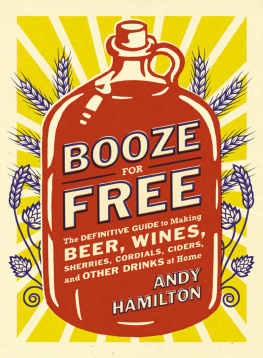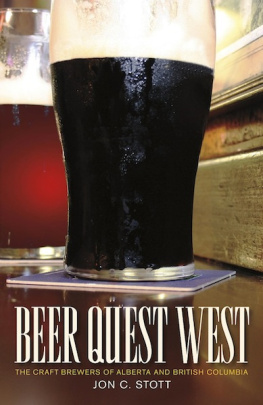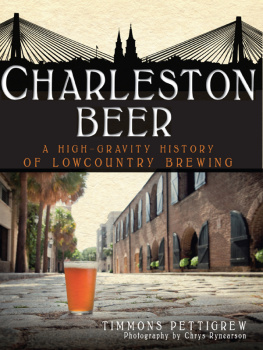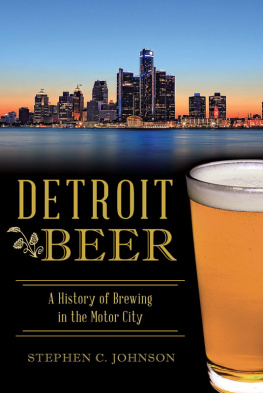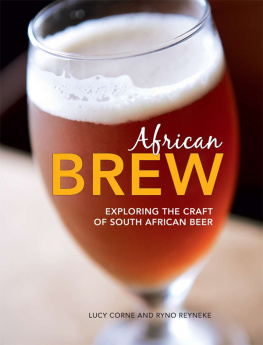CONTENTS
ABOUT THE BOOK
An updated edition of Andy Hamiltons Brewing Britain
Andy Hamilton has tried hundreds, if not thousands, of pints from the cascade of new beers, and has convinced commercial, craft and home brewers across Britain to share some of their best recipes. So why not swap a pint of the usual for something more unusual?
- Learn how to taste and talk beer like the professionals.
- Drink some of the finest ales made in Britain.
- Find out the secrets of a perfect porter, an irresistible IPA, a super stout and a marvellous mild.
An in-depth tour of beer and brewing, this is the essential companion for anyone who enjoys a decent pint.
CHEERS!
To my son Loki and my daughter Lark: Ill be proud of you both whatever you do, unless you become cider-drinkers (and even then I might forgive you).
INTRODUCTION
Food in Britain has improved dramatically since the 1970s and the main reason for this is that our access to quality ingredients has increased greatly. Demand for such foods was fuelled after the Second World War by people like food writer Elizabeth David and chef/restaurateur George Perry-Smith, founder of the legendary Hole in the Wall restaurant in Bath (one of the first decent restaurants in the UK), both of whom helped to educate the masses about such exotic foods as avocados and bell peppers. During the 1970s these once rare ingredients gradually became commonplace and since those pioneering days chefs have been able to flourish, until now we have food that doesnt just equal that of our continental neighbours but surpasses it.
The same has happened with beer in the UK: a few changed a lot. In 1971 a group of fellas in Ireland who were not happy with the crap beer that was taking over started one of the most successful consumer lobby groups this country has ever known. We have Graham Lees, Bill Mellor, Michael Hardman and Jim Makin, the men who started the Campaign for Real Ale (CAMRA), to thank not just for saving our beer from bland, mass-produced mediocrity but for the vast array of beers available to todays discerning drinker. Home-brewers should also be grateful to writers such as David Line and Graham Wheeler, who in the 1970s were releasing books to help the homebrewer move away from making kit beers with bread yeast. They may not have had the sophistication of todays homebrew books but, combined with a love of our Ales, they were enough to influence a generation of brewers over in the USA.
As our cousins over the pond got a taste for our Real Ale, so the demand for home brew increased the Americans, after all, had a much more dire crisis with their commercial beer than we had with ours. First Charlie Papazian, founder of the Association of Brewers and the Great American Beer Festival, and in later years home-brew writer John J. Palmer have both fuelled a demand for better ingredients for all brewers. Many American home-brewers started microbreweries and are now flooding the world with (arguably) some of the best beer it has ever seen.
As this wave of beer from the USA influences home-brewers and commercial brewers alike all over the world, so ingredients are improving year by year. New strains of hops are being developed, malts and malt extract are of a consistently high quality and teams of yeast scientists are developing new strains that help reliably produce great-quality beer. This is indeed a brave new world for beer but what does it mean for beer in our country?
When I set out to write this book I asked myself two questions: what does this country have to offer and what is the perfect pint? Having completed the book I now feel that the perfect pint is something of a dichotomy: it can never be found and yet you always have it. The perfect pint is always going to be the one that you are enjoying right now perhaps a sneaky lunchtime half of Mild, a mind-blowingly powerful IPA to start an evening, an Imperial Stout to finish one off, a Best Bitter amongst friends to celebrate a promotion, a Wee Heavy to warm the cockles after a trek through the snow, a refreshing Saison to quench a summer thirst, a crisp Lager after a hard days graft, or even a few pints of Golden Ale at a beer festival with friends; each and every one is the perfect pint because they are all perfect for whichever moment you choose to have them.
But for this very reason the perfect pint can never be found, as your mood and situation will always change, new beers will come and go and tempt you, each being perfect at the right time. This means the quest for the perfect pint can never have an end and it is this fact that makes it the most enjoyable quest possible.
This book will help you along that never-ending journey. It will take you on the same path of discovery that I took, looking at the bare bones of beers, taking them apart so you can really get to know what you are supping and, of course, learning how to make them. But it is also about trying other peoples beer. Just as a good chef, chocolatier or vintner will sample the produce of others in order to perfect their own, so any good brewer should try as much great beer as possible in order to influence their own style positively. There would be no use trying to create a Porter, Stout or Brown Ale had you never tried what they can taste like at their best.
PART ONE
THE DRINKERS GUIDE TO BEER
TASTING BEER
An author sitting sharing a beer with a couple of builders beer is a great leveller, mused a builder with whom I shared a pint in a pub in Cambridge. He was right, as undeniably one of the greatest things about beer is that it cuts right through the silly class divide that exists in our country. Pubs have always been places where rich builders can share in the enjoyment of beer-drinking with poor authors or where gentry can have a pint of the usual with the workers after a hard day. But when we start creating parallels with wine by doing things like having tastings, then are we not in danger of at the very least a poncification of beer creating a divide between different beers and therefore a divide between different beer drinkers? Are we in danger of the gentrification of this drink of barbarians and thereby of turning some beers into a drink for snobs and elitists?
Well, no, not at all. For a start beers are generally not as expensive as wines and most will fit into a similar price bracket. A beer is best drunk within a few months, or in some cases a few years, but never a few decades like wine. This means that beer can never be a long-term investment and therefore should always be accessible to everyone. Beer-tasting, in my experience, is much more about mutual enjoyment than about one-upmanship. Or at least it should be. Learning to taste the subtle and not so subtle flavours in each hop, the sweetness of the malts and the interplay between the two just adds to the enjoyment of beer. Learning to taste rather than drink a beer is a great skill, and is available to anyone who can afford a beer and has a working tongue and olfactory system rather than a big bank balance.
Beer sommelier, journalist and excellent drinking companion Sophie Atherton says, Everybodys palate and sense of smell is individual and personal to them. Trust your senses and dont allow others to tell you what you can taste. Do be aware of how the environment affects what youre tasting, though especially if youre sitting next to someone with strong perfume!


